Table of Contents
Guide

2009 Rourke Publishing LLC
All rights reserved. No part of this book may be reproduced or utilized in any form or by any means, electronic or mechanical including photocopying, recording, or by any information storage and retrieval system without permission in writing from the publisher.
www.rourkepublishing.com
PHOTO CREDITS: Alexander Kalina:
Edited by Kelli L. Hicks
Cover design by Nicola Stratford: bdpublishing.com
Interior design by Renee Brady
Library of Congress Cataloging-in-Publication Data
MatMattern, Joanne, 1963
Kickboxing / Joanne Mattern.
p. cm. -- (Action sports)
ISBN 978-1-60472-395-3 (Hardcover)
ISBN 978-1-60694-783-8 (Softcover)
1. Kickboxing--Juvenile literature. I. Title.
GV1114.65.M34 2009
796.815--dc22
2008016352

Post Office Box 3328, Vero Beach, FL 32964
WHAT IS KICKBOXING?
.
Martial arts started in the Far East. The Far East includes the countries of China, Japan, Korea, and Vietnam. These sports became popular in the United States after World War II (1939-1945). Kickboxing as we know it today started in America in the 1970s.
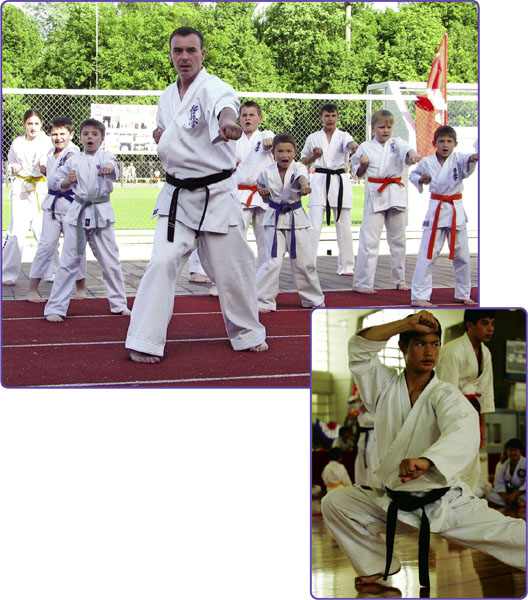
A sensei, or martial arts master, leads students through a drill.
Did You Know...
Karate is a Japanese word. It means empty hand. Karate is a kind of fighting that does not use weapons.
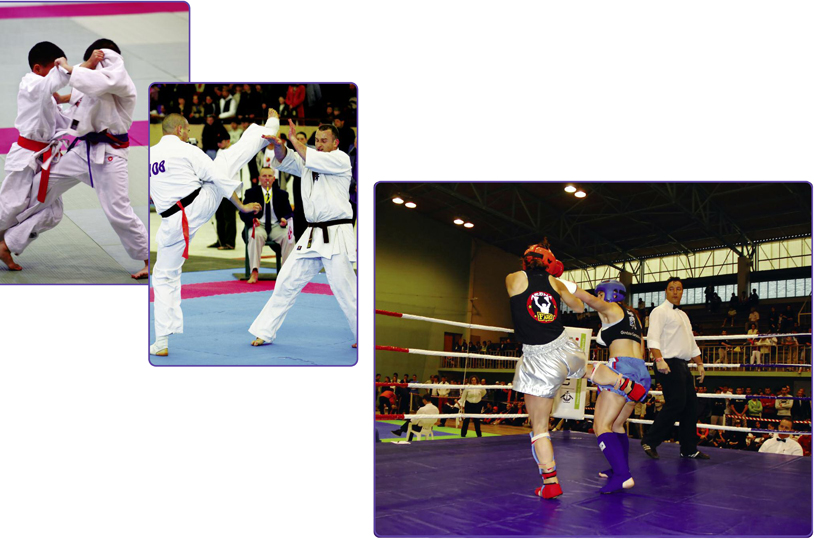
These kickboxers are trying to knock each other onto the mat.
Some martial arts use . Forms use a set of traditional movements. The movements in a form are always the same.
Kickboxing is different. There are no forms in kickboxing. Instead, kickboxers move their bodies any way they need to.
Kickboxing is a sport. The athletes hit and kick each other as hard as they can.
KICKBOXING EQUIPMENT
Kickboxers do not use weapons. However, this is a rough sport. Kickboxers must wear gear to stay safe.
Kickboxers wear foot protectors. These are soft, padded slippers. They keep the athletes from hurting their feet or ankles. Kickboxers also wear shin guards. These thin plastic guards protect the legs from kicks.
Boxing gloves are an important piece of equipment. Gloves protect the hands, fingers, and wrists.
Did You Know...
At first, kickboxers could not make full contact. People thought it was too dangerous! Finally, people developed safety equipment so athletes could hit and kick without hurting each other.
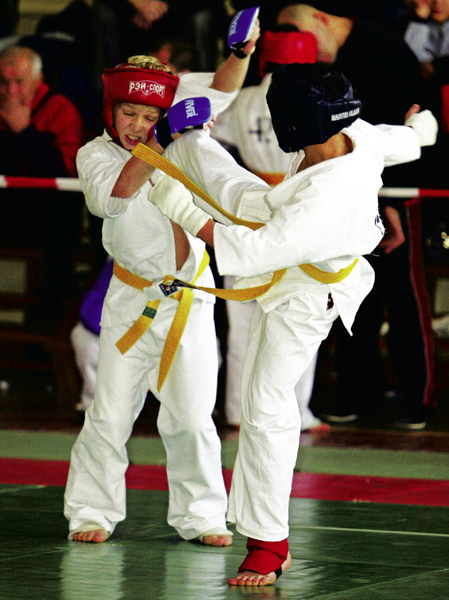
A kickboxer must protect the head and face during a kickboxing match. Kickboxers wear a head guard. A head guard is a soft helmet. It covers the athletes head and forehead. A thick strap covers his or her neck. Kickboxers also wear a mouth guard. A mouth guard is a piece of rubber that protects the athletes teeth.
Boys who kickbox wear a cup to protect their . Girls and boys wear a chest protector under the shirt.
Kickboxers also use thick pads when they practice. These pads let students learn new moves without hurting anyone.
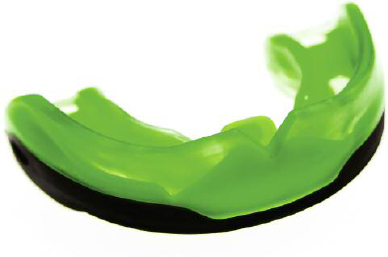
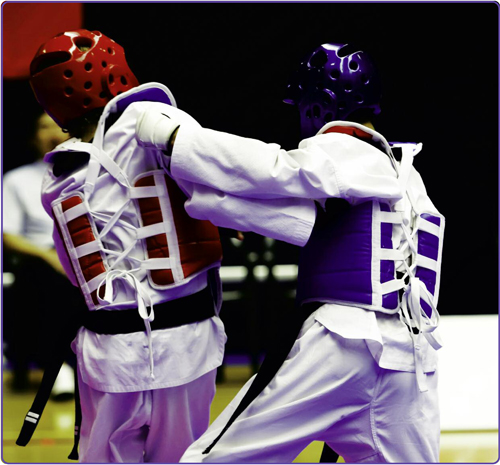
Kickboxers wear helmets and pads to stay safe during a match.
KICKBOXING PUNCHES AND KICKS
Kickboxers use their hands and feet as weapons. Here are some basic kickboxing moves that use the hands.
The Jab
The jab is the most basic punch. When a person jabs, he or she punches straight at his or her .
The Cross
A cross is like a jab, except the kickboxer turns his or her fist as it hits.
The Hook
To do a hook punch, the kickboxer turns his or her hips and shoulders and swings the arm around. This makes the hook a very hard punch!
The Uppercut
An uppercut is a punch straight up to the opponents chin.
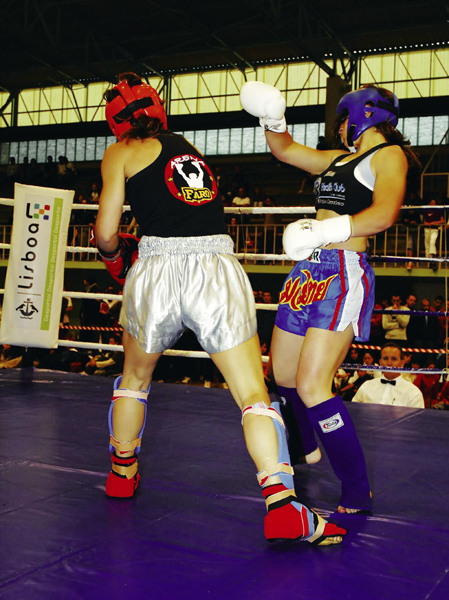
KICKS
There are many ways to use your feet and legs in kickboxing. Here are a few of the most common kicks.
Front Kick
The athlete lifts the foot up and kicks out at the opponent to do a front kick.
Roundhouse Kick
To do this kick, the athlete moves his leg up and around in a half-circle.
Side Kick
In this kick, the athlete kicks to the side and twists the hips.
Back Kick
To do this kick, the athlete kicks straight back and out.
Knee Strikes
The knee can be a powerful weapon. Kickboxers lift their knees to hit an opponent.
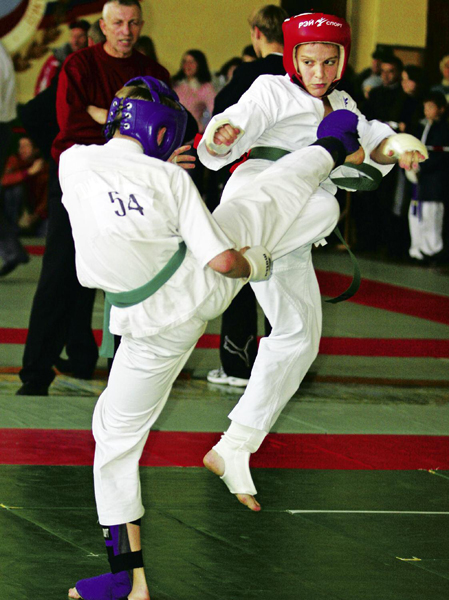
DEFENDING YOURSELF
Kickboxing is not just kicking and hitting. A kickboxer must also defend against punches and kicks.
Kickboxers stand in a . They stand with knees slightly bent. The arms are in front of the body. The fists are in front of the face. This position protects the athletes groin, stomach, neck, and face.
Kickboxers must always be ready to defend themselves. When a fighter sees a punch or kick coming, he must it. An athlete blocks with the arms, legs, or body.
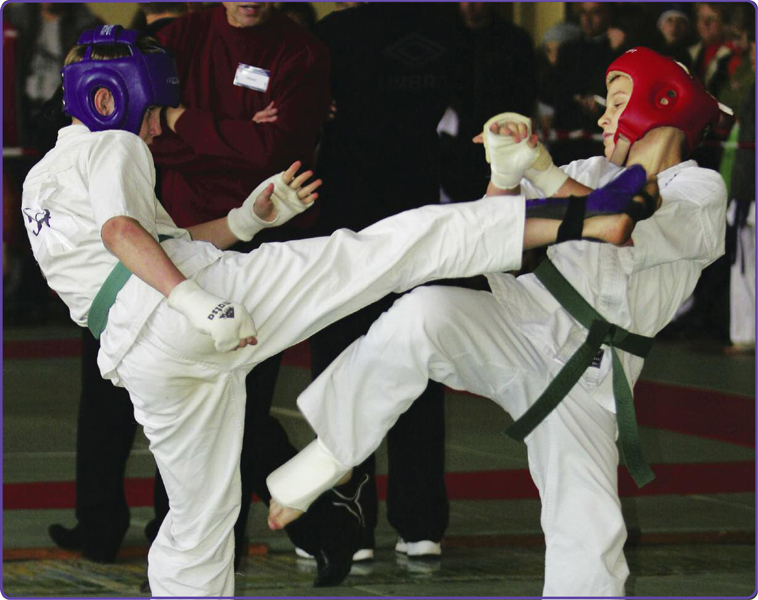
The kickboxer in the red helmet successfully blocks a kick from his opponent.
BELT RANKINGS
A belt system ranks kickboxers. The color of the belt shows the kickboxers . The lowest rank is usually a white or orange belt. The highest rank is a black belt. It can take up to three years of training before an athlete achieves a black belt.
Athletes must pass a test to move up to the next belt color. The test includes physical challenges. The athlete must also show .
BELT RANKINGS
Every school has its own system of belt colors. Here is a common example:
Orange  Blue
Blue  Green
Green  Red
Red  Brown
Brown 

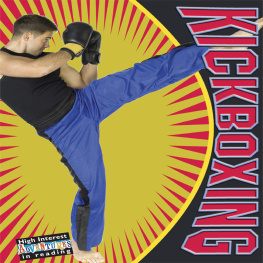



























 Blue
Blue